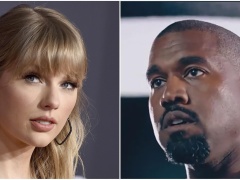
The key to editing and scoring “Catch and Kill: The Podcast Tapes,” based on Ronan Farrow’s 2019 book of the same name, was honoring the story at heart and honing in on the key moment that drove each half-hour episode.
The six-episode HBO series collects unseen footage, archive interviews and insight into Farrow’s reporting process as he details the efforts behind the systematic abuse by Hollywood producer Harvey Weinstein, which helped kick-start the #MeToo movement.
Like the podcast and book, “Catch and Kill,” named for a practice often used by tabloid media, chronicles how Farrow landed the story and the difficulty he had getting it to air on television as he wrestled with NBC News. Interviews with the whistleblowers, Weinstein survivors Rose McGowan and with Ambra Gutierrez, the Italian model who wore a wire to assist police in nabbing him, are also features.
Directors and World of Wonder co-founders Fenton Bailey and Randy Barbato helm, and editor Francy Kachler and composer David Benjamin Steinberg, who have worked together on “Million Dollar Listing,” “Freedia Got a Gun” and “Liberty: Mother of Exiles, among other projects, had to balance the wealth of interview footage and archival material to tell the story and bring a powerful visual to life.
Kachler and Steinberg discussed their collaboration process with PvNew.
How did you approach the project during the pandemic?
Francy Kachler:Previously, I would go over to David’s studio and listen to things, but this time around we had to Facetime one another and he would hold his phone out for me to hear things. That’s how so many conversations went.
David Benjamin Steinberg: It didn’t really disrupt my workflow with the team. I have been working primarily remotely with my group of musicians for the last couple of years, and everybody I work with has a home studio. I would send the charts and my audio reference files, we’d video chat for our session and then they send me back their files which I incorporate into my session.
I’ve worked with small orchestras in Europe in this way. My mixer is in the UK and my orchestrator is in Boston, so, fortunately, I was well-positioned to weather the storm and keep writing and working. Since the entire West End Theatre District was shut down, I had the opportunity to work with some of the top musical theatre singers who had been idled. They all recorded in their home studios and it worked out beautifully.
In the first episode, “The Wire,” we hear Harvey Weinstein’s voice against David’s tense score. What was your way into that?
Kachler: For ‘The Wire,’ it was the audiotape of Ambra, which I think was Fenton’s choice to start with.We were locked into under 30 minutes for each episode, and that was a real challenge at first, because we have hours and hours of these intimate, amazing conversations with the survivors, the journalists and the whistleblowers, and we had to hone in and find the piece that drove that episode. We have to cut away from all these things that we found amazing. But Randy and Fenton are so good at finding what makes that story tick and getting rid of everything else around it.
So you hear it and it’s menacing but putting those things together, that is the moment. When you cut everything out, and you are left with those two things, that’s the moment.And with David’s score, it had everything. It had the emotional and the urgency.
Steinberg: The tone of that and the way you edited really set the tone for the series. You have this dream or nightmare feeling as we come into New York with its beautiful cityscapes, but something is off-kilter, and then it starts to get dark as we hear our story and go into this tunnel which leads us to the main theme.
With that, my entrée into finding the tone came through writing the main title theme. I wrote a few ideas for the title theme, and we worked with one of them for quite a while. But as the series evolved, and the story evolved, I think there was a consensus that it was just a little too large scale.So, I looked at it again and brought out the mystery aspect of this story so that it was more mysterious and less ominous.
I drew on my love for Bernard Hermann and it ended up being slightly Hitchcockian in its approach. That motif ended up being a recurring element throughout the score.It’s fairly organic when we hear it in the main title sequence with the graphics. As we go on this journey, the theme changes and becomes more intense.
Kachler: The story is a thriller if you think about it, and that was everybody’s initial, ‘Go for it.’ But we still had to find the balance of intimate, emotional, and small conversations about where we want it to be in the room.
What was in the palette for the score?
Steinberg: I had always envisioned that a certain amount of it would be very ambient, and bringing out that sort of dream-like aspect of the storytelling. That kind of scoring tends to not fight dialogue. When somebody’s telling those intimate stories, you don’t want to be in there like a bull in a china shop.
Another aspect of the score was a synthesizer kind of arpeggiated — some might say Philip Glass inspired. There were the versions of the theme that became more and more prominent. In a lot of respects, the theme came to represent Harvey Weinstein’s dark character. That was mostly heavier synths.
There were also conversations about the score having this cyber noir thriller aspect. Of course, I thought of “Blade Runner.” I thought it was this nice balance between these very minimalist, ambient cues, and in the middle were these motors that were keeping things going and churning and finally, the big themes. I liked that nice trio of approaches.
Francy, talk about the pacing and finding where to cut.
Kachler: It’s like I’m sitting in the room with these people. Where would l look? I put myself in that moment. But what we had access to had a lot to do with those choices.
Steinberg: Something I’ve found from working together is a lot of your choices are about, how do things feel? It’s intuitive. You’re making sure you tell the story. Are we making something magical? Are we making something compelling?
“Catch and Kill: the Podcast Tapes” airs Sundays on HBO






